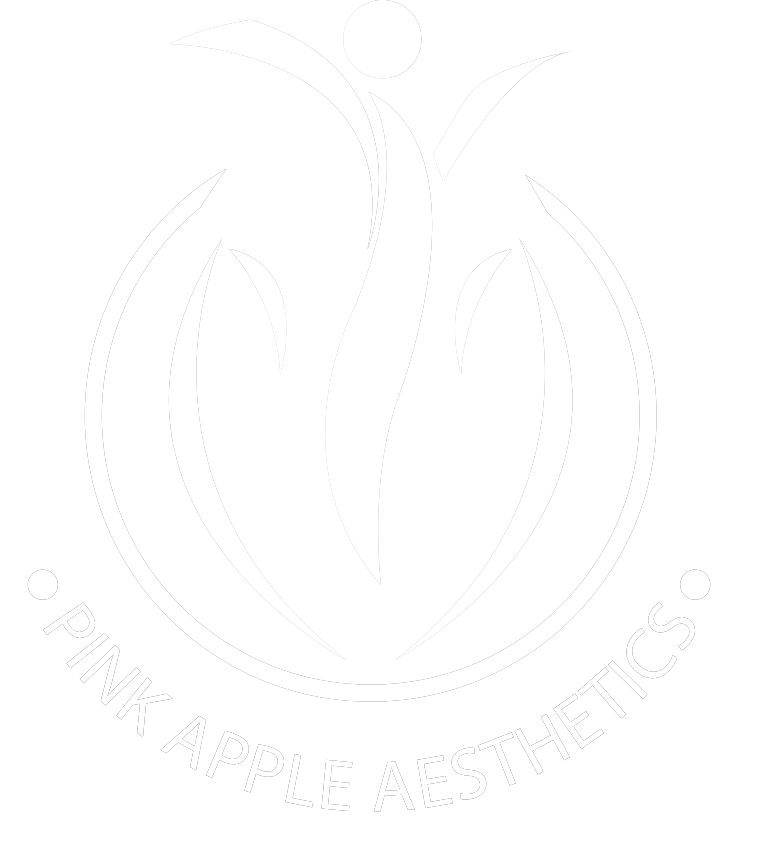
1. Does chin augmentation enhance jawline?
The restoration of facial harmony is the goal of chin augmentation. Chin implants can most certainly change the jaw line. Chin augmentation can be used to define an underdeveloped chin, or give it more prominence. Patients with excess fullness beneath the chin often choose to have neck liposuction at the same time as chin implant surgery. While strengthening the chin will help improve jawline definition on its own, removing excess fat from underneath the chin can further improve the appearance of the lower face and neck. Anatomical chin implants are used to improve the projection of the chin by augmenting the lower portion of the mandible. In addition to improving contour of the jawline and facial balance, a chin implant will also support the soft-tissue and prevent jowls and loose skin that obscure jawline. Dermal fillers, neurotoxins, fat melting injectable agents and surgical threads are other non – surgical options to enhance the jawline.
2. What is the recovery period for Chin Augmentation?
The recovery process from chin augmentation surgery is a fairly straightforward affair that generally lasts about a week. Chin augmentation implants can be placed either through small incisions made inside the mouth or under the chin. Dissolvable sutures are used to close the incisions after the implants are placed appropriately. The typical recovery time for this procedure is 1-3 weeks in most patients. Most chin augmentation patients experience relatively little downtime and are back to desk work and most other daily activities within 7 days after surgery. Swelling, redness, or bruising around the incision are perfectly normal signs of healing. Within the first two weeks regular activities can be resumed but continue to avoid strenuous movements and heavy lifting for at least three to four weeks following the procedure.Discomfort is typically minimal and easily controlled with pain medication or cold compresses. Chewing solid foods might be difficult and even painful for the first little while, so make sure plenty of soft foods are available.
3. What materials are used in Chin implants?
Chin implants are silicone material implants which are inserted & safe to use. Most of these small, solid devices are made from a bio-compatible material which can be easily molded to fit around a patient’s chin bone.Other materials apart from silicone are medpore, Gore-Tex, titamin mesh, bone grafts, genioplasty etc. Silicone has a long history of use in plastic surgery and is very reputable among plastic surgeons. Polyethylene implants are porous, hard, flexible, and come in a variety of shapes and sizes. They incorporate into the surrounding tissues, which can merge with the pores of the material. Polytetrafluoroethylene implants has the dual advantage of being soft and strong at the same time. It is inserted in the form of carved blocks, premade custom implants, and trimmed sheets, and it is held to the jawbone with the help of titanium screws. Acellular Dermal Matrix are implants fashioned from the tissue taken from donors just after their death and this is ideal only for soft-tissue augmentation.
4. What is involved in the Genioplasty procedure?
Genioplasty, is the classic procedure for chin augmentation. An anatomically shaped implant, typically made from a solid, medical grade silicone or other bio-compatible composite, is placed around your existing chin bone via a short incision made underneath the chin or inside your mouth. Results are meant to be permanent, as a chin implant can last a lifetime. However, the implant can be removed if desired with another surgery. A genioplasty is performed by both plastic and maxillofacial surgeons under general anesthesia, The key advantages of this procedure include permanent results after one procedure, multiple options for implant shape, size, and projection to customize your look, scars are undetectable once healed and other combination procedures can also be performed along with this like neck liposuction or nose job. Genioplasty is most frequently a cosmetic surgery, meaning people choose to have it for looks and not because of a medical problem. Genioplasty is a short surgery with very low safety risk when performed by a qualified cosmetic surgeon.
5. What are the reasons to opt for Chin Augmentation?
Chin augmentation is a surgical procedure that enhances the shape and projection of the chin. A weak chin can make the nose look larger or create a lack of definition between the jawline and neck. By strengthening the chin profile, a balance and proportion to the rest of the face can be brought about while creating a stronger jawline that appears more youthful.There are a number of reasons to consider chin augmentation like to strengthen a weak, underdeveloped chin, to produce a more attractive triangular shape to the jawline, to increase the height or width of the chin, to minimize the appearance of jowls or a double chin, to bring balance to the nose and chin or to change the appearance of chin dimpling. By balancing the chin to the rest of the facial profile, other features also come into balance as well. A chin implant surgery by itself typically takes less that 1 hour to perform.
6. What are the other procedures done with Chin Augmentation?
A chin augmentation can create a square chin, which is more appealing for both men and women. This stronger chin makes the patient appear more fit, healthy, and energetic. Some of the procedures commonly performed with chin augmentation include: Rhinoplasty (nose reshaping surgery), Neck lift or neck liposuction, Cheek implants and Face lift. Chin augmentation with nose reshaping surgery is one of the most common facial contouring procedure combinations. Although rhinoplasty can alter the facial profile of a patient with minimal change, adding genioplasty significantly improves aesthetic appeal.The relationship between the chin and the nose plays a big role in determining how proportionate one’s face appears. In most cases, these procedures can be performed simultaneously, giving more dramatic results with just one time under anesthesia and one recovery period. This prompts many patients to schedule their procedures together, rather than in separate surgeries. The non-surgical chin augmentation uses an injectable filler. Most fillers are temporary, with results lasting months to years.
7. What are chin fillers?
Chin fillers are cosmetic injections that revolumize and restore the chin area non-surgically. Many cosmetic filler options are made from a clear gel composed of a substance that is naturally found in skin. The fillers vary with their thickness, viscosity, and longevity. Finer, smoother ones don’t last as long, while thicker ones usually last longer. Optimizing the chin helps to create definition in the lower third of the face. When injected in combination with the cheeks and jawline, it can create the desirable heart-shaped face. Chin fillers are injected in key points to add volume beneath the skin and modestly enhance chin and jawline contours. The results are temporary, but long lasting for about 12 to 24 months.The key benefit of using chin fillers is immediate improvement. Chin enhancement with dermal fillers should be performed with proper technique and good aesthetic judgment. Some of the most commonly used fillers for the chin area are HA-based gel fillers such as Juvederm Voluma and Restylane Defyne.
8. What are the causes of a weak chin?
A weak chin can make the face appear shrunken and older and it can lead to an overbite that cause the top teeth to protrude too far and extend the upper lip. The primary reason for a weak chin profile is due to genetics; there is insufficient frontal projection of the chin pad or bone of the chin or in other cases the storing of excessive fat around the jawline. In many cases, a receding chin is a natural part of aging in both men and women. As you grow older, you may naturally lose a bit of bone and soft tissue around your jaw, leading to retrogenia. Some people are simply born with a receding chin or develop one due to an overbite. Both chin implants and sliding genioplasty, which involves cutting and reshaping your lower jaw bone, can help a weak chin. Dermal fillers are also an increasingly popular procedure which can be used to help fix a weak chin.
9. Does chin implant change smile?
Any change to a patient’s smile after an uncomplicated chin implant is usually due to a combination of swelling and changes in sensation..Chin surgery can potentially affect the muscles, nerves, and skin in the area. Normal postoperative swelling and stretching are the most common factors which can possibly affect a smile after chin implant surgery. Post-operative swelling could also affect speech for a short time, as the chin and mouth will feel stiff while talking or smiling. This can resolve as time progresses with the healing and facial exercises. In the cases when the implant is placed trans-orally (through the mouth) rather than through a submental incision done through the skin under the chin there could be some change to the smile of the patient. The shape of the smile can change when chin fillers are injected directly into the parentheses lines around the mouth.Maxillary surgical procedures or laser therapy for lip irregularities are some methods to improve or enhance smiles.
10. Who is an ideal candidate for Chin Augmentation
Chin augmentation and chin implants can work for both men and women if the chin is recessed or overly pointed/squared. A chin implant could also help if features like the neck is overly fleshy or nose too prominent. Those with a receding chin, elongated chin, congenital chin deformity, birth defect, sagging skin on the neck or a misaligned jaw are ideal candidates for chin augmentation.Those in poor health, dealing with cardiac problems, or taking an anticoagulant should not go for a chin augmentation. The patient should ideally have good dentition and normal occlusion which means that their upper teeth should meet their lower teeth appropriately. This can affect the final result. Another important factor is to never go in for this type of surgery with unrealistic expectations. As with every other aesthetic surgery, finances should be considered as well. It’s best to look at chin augmentation as an investment that can lead to a more confident version of yourself and an improved quality of life.
For Enquiries and Online Appointments
For more detailed information about Chin Augmentation, please send us a message today.

